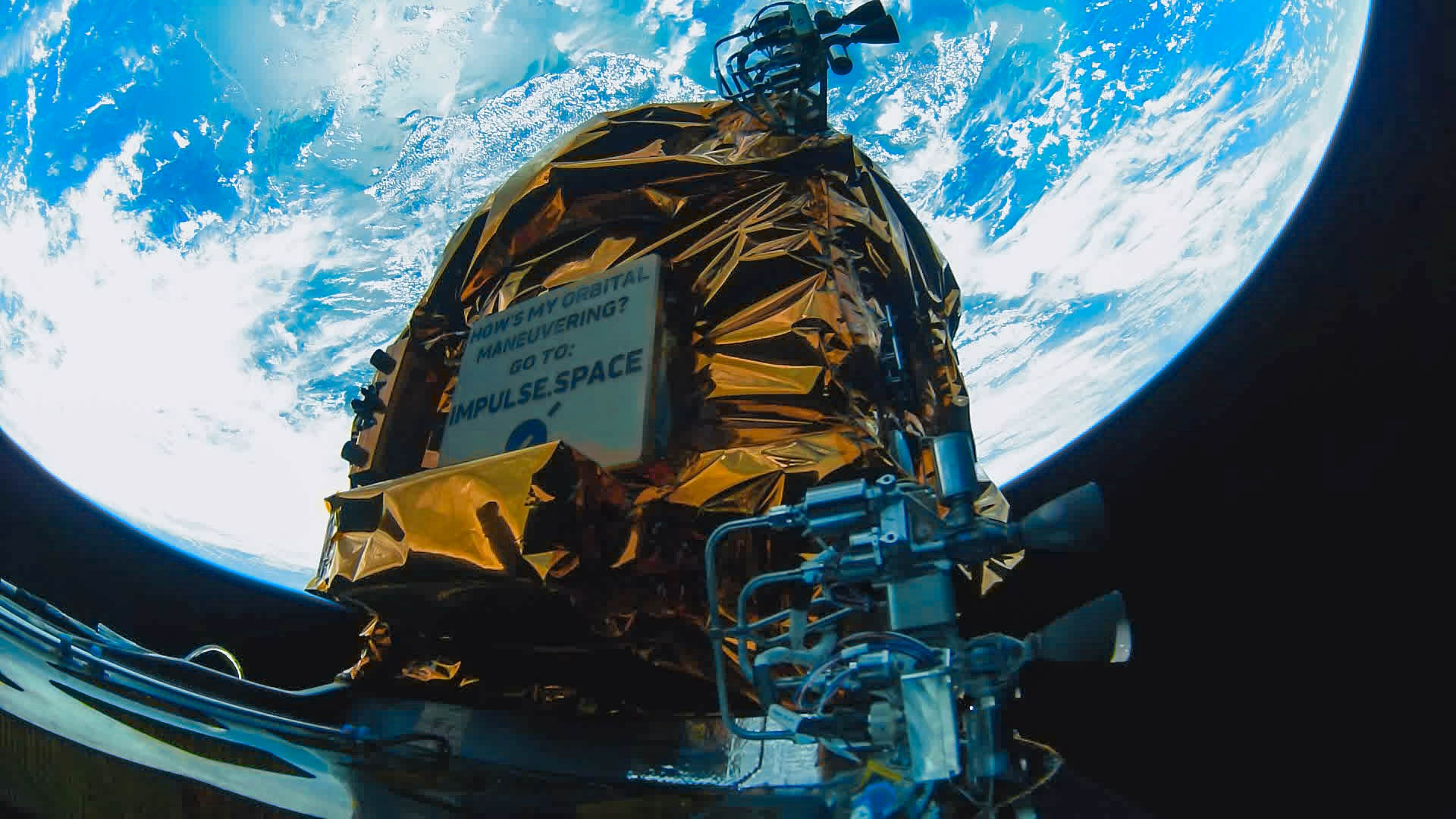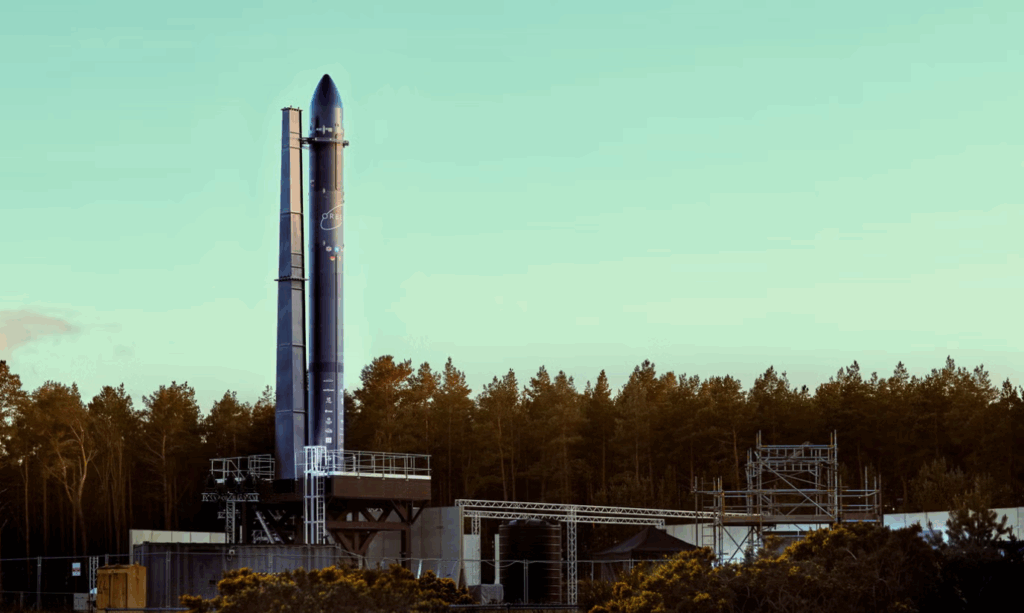Now Reading: Impulse Space raises $300 million for expansion and new technology development
-
01
Impulse Space raises $300 million for expansion and new technology development
Impulse Space raises $300 million for expansion and new technology development


WASHINGTON — Impulse Space has raised $300 million in a “preemptive” funding round to enable the in-space transportation company to expand and develop electric propulsion technologies.
Impulse Space announced June 3 it closed a $300 million Series C round led by a new investor, Linse Capital. Another new investor, DFJ Growth, also participated in the round as well as many returning investors.
“Impulse is tackling one of the most technically demanding challenges in aerospace with a speed and precision we rarely see,” Bastiaan Janmaat, managing partner at Linse Capital, said in a statement about their decision to invest in Impulse. “Their vertically integrated approach, proven track record, and ability to execute quickly in this market give them a real advantage.”
The new round, called a “preemptive raise” by Impulse in a statement, comes less than a year after the company raised $150 million in a Series B round. That funding was intended to support the company through the first flight of its Helios high-performance transfer vehicle, scheduled for 2026.
“It was not our plan to go out and raise anything this half of the year,” Eric Romo, president and chief operating officer of Impulse Space, said in an interview. However, the company was approached by Linse Capital about investing.
“We managed the company relatively conservatively,” he said, seeking to stretch out the Series B funding. “We looked at, if we had more money in the bank, what would we do that we currently do today?”
Impulse plans to use the funding for several initiatives. One is to scale up production of its Mira and Helios vehicles to better meet demand for them. The company says it has more than 30 signed contracts for those vehicles, a backlog worth nearly $200 million.
Romo said the company is seeing increasing demand for Mira, the smaller of the two vehicles, for defense applications. That include an agreement with Anduril announced last October where that company will provide its software for Mira tugs to carry out “highly maneuverable space missions.”
“The narrative from the Space Force around space defense and space control has gotten a lot louder and more public over the last few months, which ties into a lot of the demand that we’re seeing from Mira,” he said.
In the commercial market, Impulse Space announced an agreement with satellite operator SES May 22 to transport an SES satellite from LEO to GEO using Helios in 2027, with opportunities for additional missions.
“We were thrilled to get that SES deal across the finish line,” Romo said. “They have, for a long time, been embracing new technologies,” such as flying the first commercial GEO satellite on a Falcon 9 and later being the customer for the first reused Falcon 9.
Impulse is also tracking potential new opportunities from NASA. That includes roles in commercial transportation services to the moon and Mars that is one of the new focus areas in NASA’s fiscal year 2026 budget proposal released last month.
He said while Impulse plans to ramp up Mira and Helios production, it has not set a target for the number of vehicles annually it plans to produce. That expansion will involve the company’s current facilities in Southern California as well as growing its current small presence in Boulder, Colorado.
The funds will allow the company to hire more people. Romo said the company has about 225 to 250 employees now but is actively hiring. “If we’re at 350 by this time next year, I think we’d consider that a success.”
Impulse also plans to invest in research and development, such as work on electric propulsion systems. “We’re trying to expand the places where we can help commercial, NASA and defense customers,” he said. “As we’ve looked at those different mission sets, there are places where, you know, long duration, extremely high delta V missions made sense.”
Impulse is just starting work on electric propulsion, and Romo said the company has not selected a particular technical approach other than it will be one that is “closer to tried and true” technologies. “I don’t think you’ll see us do anything that sounds like a science project. I think you’ll see us do things that are, you know, tried-and-true traditional engineering, but then try and do it in an extremely reliable, robust and low-cost way.”
Stay Informed With the Latest & Most Important News
Previous Post
Next Post
-
 012024 in Review: Highlights from NASA in Silicon Valley
012024 in Review: Highlights from NASA in Silicon Valley -
 02Panasonic Leica Summilux DG 15mm f/1.7 ASPH review
02Panasonic Leica Summilux DG 15mm f/1.7 ASPH review -
 03How New NASA, India Earth Satellite NISAR Will See Earth
03How New NASA, India Earth Satellite NISAR Will See Earth -
 04And Thus Begins A New Year For Life On Earth
04And Thus Begins A New Year For Life On Earth -
 05Astronomy Activation Ambassadors: A New Era
05Astronomy Activation Ambassadors: A New Era -
06SpaceX launch surge helps set new global launch record in 2024
-
 07From Polymerization-Enabled Folding and Assembly to Chemical Evolution: Key Processes for Emergence of Functional Polymers in the Origin of Life
07From Polymerization-Enabled Folding and Assembly to Chemical Evolution: Key Processes for Emergence of Functional Polymers in the Origin of Life




















